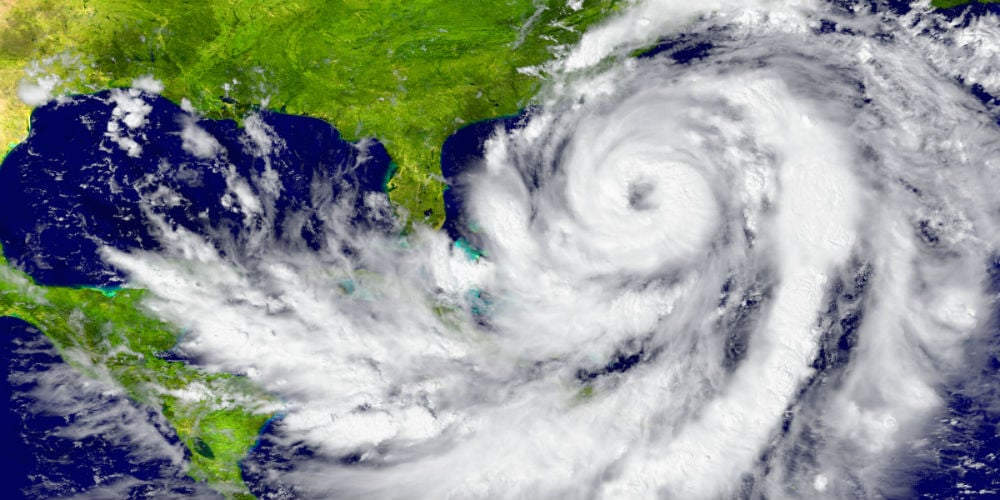Hurricane preparedness: Prior planning prevents poor performance

June 1 marked the official start of Hurricane Season, which means credit unions up and down the East Coast are dusting off their checklists from last year to make sure they are prepared. Chances are you are probably feeling relatively confident with the state of your hurricane preparedness plans, given that 2005 was the last year a major hurricane hit the United States when we saw Dennis, Katrina, Rita and Wilma come ashore. Before you get too comfortable, here are some things you should consider going into this year’s windy season:
Hindsight is 20/20
The last time we went this long without a major hurricane making landfall was when Ulysses S. Grant was in the White House. Modern records have been kept on hurricanes in this country since 1851. According to the National Oceanic and Atmospheric Administration (NOAA), since that time two major hurricanes have made landfall every three years in the United States. Prior to this year, the longest streak without one was from August 1860 to September 1869.
Why is this important to your credit union?
History has shown that companies are most prepared for a hurricane right after they are impacted by a storm. Chances are that the employees that led you through hurricane season in 2004 and 2005 may no longer be with your credit union. In reviewing your plans this year, make sure to not only assess the strength and relevance of your plan, but also identify any employees who have previous experience with hurricanes. What new buildings and branches do you have? Both evacuation and flood zones can change quite a bit over 11 years; you may find that some of your locations would be required to evacuate sooner or are considered to be a higher flood risk than in previous years. What new third-party providers have you added, where are they located, and what will you need from them if a storm hits your credit union?
Say it with Cash
The Department of Homeland Security has a “Basic Disaster Supplies Kit” that includes items people will need in any natural disaster. The list includes items you would expect to see: food, water, flashlight, and a battery-powered radio. But one thing on this list could have a large impact on credit unions in particular: cash.
After a hurricane, many businesses may find themselves without power. This means purchasing essential items for your family like groceries will require cash as local merchants may not be able to accept credit or debit cards. Cash quickly becomes a necessity in such a situation. During the time leading up to a storm, gas stations, grocery stores, home improvement stores and financial institutions see a heavy influx of customers. As a credit union, do your hurricane preparation plans take this increase in members at your branches into account? How will you handle needing more employees at the branch level when some of those same employees may be focusing on their own personal hurricane preparation? Will your ATMs need to be replenished more often than normal?
Population Boom
The population that the United State Census Bureau identifies as the South has grown from 107 million to 121 million since 2005, an increase of almost 13 percent. More people require more roads, more schools and more businesses. The result is that in the event of a hurricane, mandatory evacuations will take longer.
Your state’s Emergency Management officials take this into account when issuing evacuation orders. An evacuation order that would have been issued 24 hours prior to a storm making landfall in 2005 might be issued 36 hours prior to a storm making landfall today. Your plans should take into account that your credit union may have less precious hours to prepare between the identification of a credible threat of a storm making landfall and a government issued evacuation order than you had in the past.
Times Have Changed
Do you remember what type of cellphone you had in 2005? Both the iPhone and Android were years away. Twitter did not exist. Neither did Dropbox. Most people had not heard of “the cloud.” Desktops still outsold laptops by a wide margin. Tablets would not be on the market until 2010. Almost all of these technologies are essential to most businesses today, and they did not even exist the last time we experienced a major hurricane. So have your plans kept up with all of these changes? The Centers for Disease Control and Prevention (CDC) reported in December that 47 percent of homes in the United States no longer have landlines. If your employees do not have power to charge their cellphones, how do you plan to contact them?
As the saying goes, proper prior planning prevents poor performance. By thinking through these scenarios and potential pitfalls, hopefully this year’s hurricane season will be smooth sailing for your credit union, regardless of whether we have a major storm.

